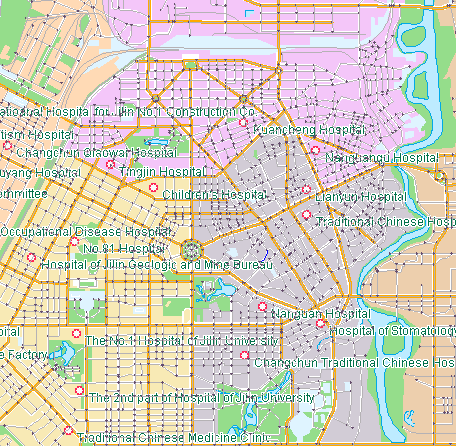Location selection is a prerequisite for the success of both commercial and non-commercial organizations. Location-allocation is to select the optimal location for one or more service providers in a certain region, so that the facilities can be one of the most cost-effective ways to provide services and merchandise. Location allocation is not merely a site selection issue, but also requires allocating the demand quantities of demand points to corresponding facility service areas.
Application Examples
- When a retailer opens new chain stores that need to receive goods from different manufacturers daily, a significant portion of the budget is spent on transportation. Therefore, when selecting locations for new chain stores, the retailer must consider the positions of existing stores while ensuring the lowest total transportation cost for all stores. From consumers' perspective, stores must be located within their maximum acceptable travel distance. Based on these factors, decisions must be made on how many new stores to open and where to locate them.
- During the pandemic, a large number of nucleic acid sampling sites were needed. To facilitate convenient access for citizens, 15-minute nucleic acid service circles were constructed based on service radius. For example, a district needing 240 sampling sites could use existing POIs like communities and parks as candidate centers. By setting 240 desired center points for analysis, optimal sampling locations could be determined.
Key Concepts
- Location Allocation Types
Least Center Mode: Requires the analysis results to allocate as many demand points as possible to resource supply centers within the maximum resistance range. This mode is widely used, such as minimizing the number of new supermarkets or school bus stops.
Maximum Coverage Mode: Unlike the least center mode, the number of new facilities is user-defined. This mode aims to maximize coverage of demand points within specified parameters. It is suitable for locating emergency services like fire stations, police stations, and hospitals.
- Resource Supply Centers: Facilities providing resources/services, corresponding to network nodes. Each has attributes like maximum resistance value, center type, and node ID.
Maximum Resistance Value: Limits the cost of resource supply centers. Demand points exceeding this value will be filtered out.
Center Type: Three types: fix center (existing facilities), center (candidate facilities to be added), and non-center (excluded from analysis).
Resource Allocation Direction: Two options: allocate from center or not allocate from center.
Example: A city has 15 hospitals (red markers in left figure). To select 7 as centralized examination sites for college entrance exams, the analysis ensures maximum coverage within 30-minute travel time. The right figure shows optimal locations (colored markers) and their service areas.
 |
 |
| Schematic diagram of center points | Optimal location allocation results |



